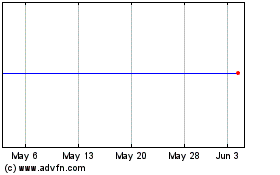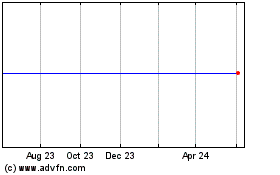For Regionals Like U.S. Bancorp, Profits Up But Loan Demand Static
22 July 2010 - 4:07AM
Dow Jones News
Even banks that came through the financial meltdown in better
shape than their peers can't grow their lending in this
economy--but they are becoming more profitable.
Second-quarter profits improved at strong regional banks U.S.
Bancorp (USB), M&T Bank Corp. (MTB) and Comerica Inc. (CMA),
they reported Wednesday, because more borrowers were able to repay
their loans and the profit margin on loans increased. All said loan
demand remains anemic, and U.S. Bancorp and M&T managed to
report growing revenues by other means.
"It's not as if we see much of a drop in [loan] demand,"
M&T's Chief Financial Officer Rene Jones said during a
conference call. "It just hasn't gotten any better."
Bankers outlined some clouds on the horizon: The rise in profit
margins in the lending business will soon come to an end if loan
growth doesn't pick up. "I hope" loan demand will improve soon,
U.S. Bancorp's Chief Executive Richard Davis said, adding, "Oh my
gosh."
And while M&T, of Buffalo, N.Y., and Comerica, of Dallas,
disclosed that they spent less to generate revenue--which improved
efficiency--U.S. Bancorp's efficiency ratio worsened slightly
because the financial services reform bill President Barack Obama
signed requires banks to spend to reshape products and operations
to comply. "I for one am quite emboldened by the fact that now
we've moved from the political to the regulatory environment on
these 201 rules," Davis said. "Regulators have a more balanced and
a more measured view of how things operate."
Second-quarter profit at U.S. Bancorp, based in Minneapolis,
rose 55% from a year earlier, to $752 million, and revenue rose
8.7% to $4.5 billion. The bank grew its assets almost 7% from a
year earlier, to $283 billion, through the purchase of other banks
and loans. Sandler O'Neill & Partners LP analyst R. Scott
Siefers called it "a strong quarter on better revenues and lower
credit costs than we forecast."
M&T's profit almost quadrupled, to $189 million--in part
because the quarter lacked one-time charges that weighed on M&T
a year ago. Revenue rose 8.7% from a year earlier, to $841 million.
The bank "is bucking the trend that we've seen so far from other
banks," Sandler analyst Joseph Fenech wrote in a research
report.
Comerica's profit also nearly quadrupled, to $70 million, and
through its revenue fell 12% from a year earlier, it rose 1.1% from
the first quarter, to $616 million. "Credit improvement continued
to be broad based," BMO Capital Markets analyst Peter Winter wrote
in a research report.
Also on Wednesday, Wells Fargo & Co. (WFC), the country's
fourth largest bank by assets, reported net income rose 20% from
the prior quarter, to $3.1 billion. "We believe credit quality has
indeed turned the corner," Chief Financial Officer Howard Atkins
said.
Those results stand in stark contrast to the earnings reports
earlier this week from Zions Bancorp. (ZION) and Marshall &
Ilsley Corp. (MI), which continued to struggle despite improvement
in losses from bad loans.
Almost everywhere, demand for loans is weak because many
businesses remain in such good shape financially, and so timid
about expanding their operations, that they don't even need to tap
their existing lines of credit, much less take out new loans.
Comerica CFO Elizabeth Acton told investors during a conference
call that the bank's expectations for loan growth are dropping,
even though "we did see growth at period end on the commercial
side, including real estate."
U.S. Bancorp executives said that credit-line utilization among
middle market businesses improved, but bigger corporations are
dragging the utilization rate down.
Credit is improving, but some bankers remain cautious. Comerica
reduced the amount of money it reserved for loans that it expects
won't be paid back in the future; U.S. Bancorp and M&T added to
their reserves. M&T's CFO said he hopes loan growth will pick
up, which would require the bank to reserve for new loans, while
U.S. Bancorp said high unemployment, falling home prices, and the
economy overall are not strong enough to warrant reserve
reductions. Some other banks, including J. P. Morgan Chase &
Co. (JPM) and Citigroup Inc. (C), did reduce reserves in the second
quarter.
-By Matthias Rieker, Dow Jones Newswires; 212-416-2471;
matthias.rieker@dowjones.com
(Marshall Eckblad contributed to this article.)
Marshall & Ilsley (NYSE:MI)
Historical Stock Chart
From Jun 2024 to Jul 2024

Marshall & Ilsley (NYSE:MI)
Historical Stock Chart
From Jul 2023 to Jul 2024
